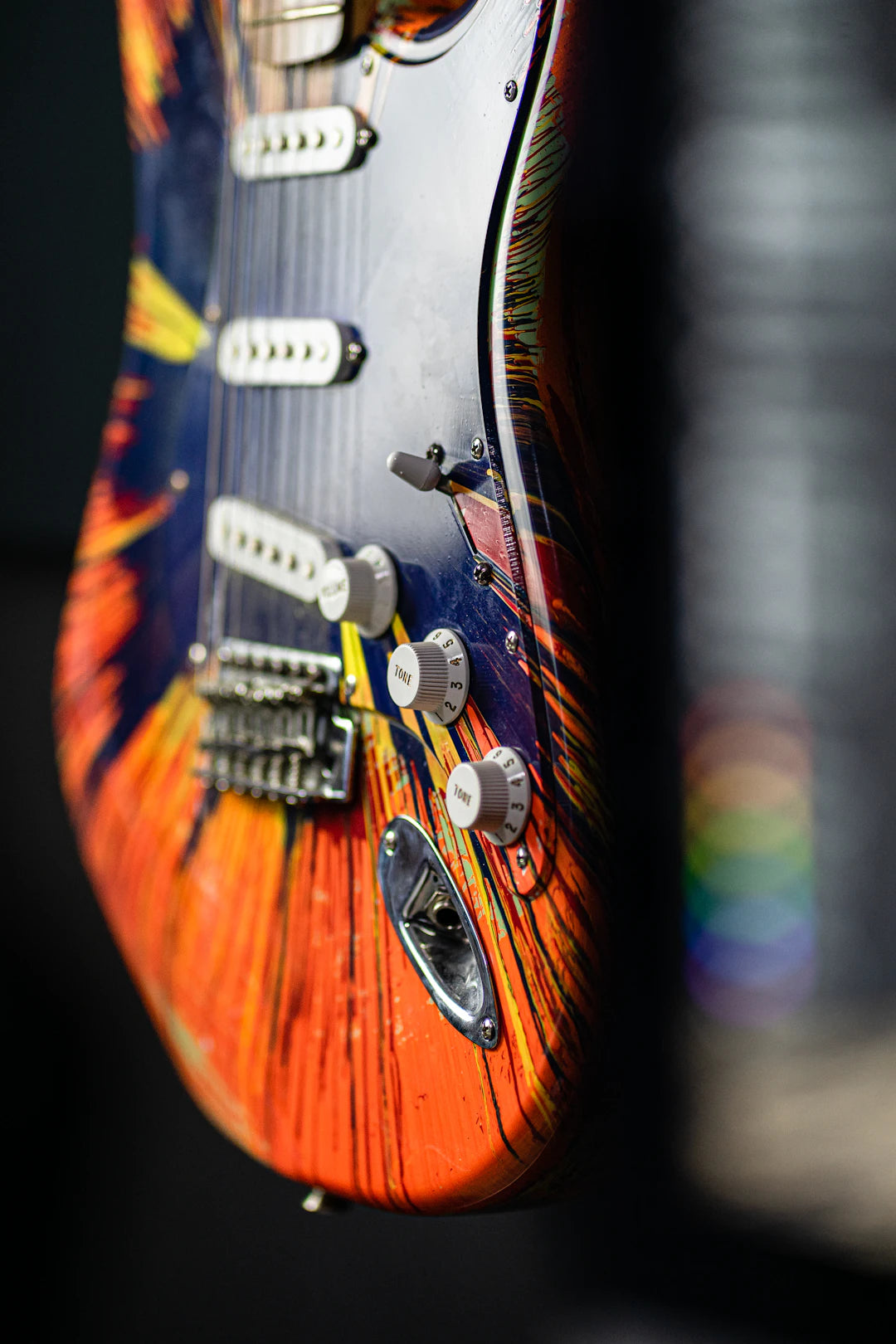Overview
This guide covers essential tips for successful guitar painting, emphasizing the importance of preparation, understanding paint types, avoiding application errors, and addressing common issues like peeling and bubbling. With the right techniques and materials, you can achieve a professional-looking finish for your guitar.
Frequently Asked Questions
1. What is guitar painting?
2. Why is preparation important in guitar painting?
3. What types of paint should I use for guitar refinishing?
4. How can I avoid application errors while painting?
5. What should I do if my paint is peeling or bubbling?
Guitar painting is an art that many enthusiasts engage in to customize their instruments or restore vintage finds. While the thrill of transforming a guitar can be exciting, it can also come with its fair share of challenges. Whether you’re using a vintage Tele neck pickup as inspiration or undertaking a complete guitar refinishing project, understanding common issues and how to troubleshoot them is essential. In this guide, we will cover common problems faced in guitar painting, along with practical tips to overcome them, ensuring your instrument looks and plays its best.
Preparation is Key to Success
One of the primary factors in successful guitar painting is the preparation process. If your guitar isn’t prepped correctly, issues can arise during and after painting. Here are some common prep-related issues and how to fix them:
Ignoring the Surface
Before you start painting, it's crucial to address the surface of the guitar. Failure to clean and sand the surface can lead to peeling and uneven finishes.
- **Clean Thoroughly**: Use a damp cloth to remove dust, oils, and grime. Consider using a specialized guitar cleaner.
- **Sand the Surface**: Use fine-grit sandpaper to scuff the finish lightly. This promotes better adhesion for the new paint.
Improper Masking
If you’re attempting to paint only specific areas, improper masking can result in paint bleeds. To achieve crisp lines, follow these tips:
- **Use Quality Tape**: Invest in painter's tape that adheres well and leaves clean lines.
- **Seal the Edges**: After applying tape, seal the edges with a clear coat or a similar product to prevent bleed-through.
Understanding the Paint Types
The type of paint you choose can dramatically affect your results. If you're working on guitar refinishing, make sure that you are well-informed about the right products for the job.
Choosing the Wrong Paint
Using the wrong type of paint for your guitar can lead to several issues such as cracking, fading, or poor adhesion. To ensure optimal results, consider the following:
- **Select Quality Guitar Paint**: Look for paints specifically designed for guitar finishes. They often come in nitrocellulose or polyurethane options.
- **Test for Compatibility**: For refinishing, always do a patch test to ensure that the new paint bonds well with the underlying finish.
Improper Mixing and Thinning
When mixing paint, incorrect ratios can lead to a wide array of issues, from poor application to finish inconsistencies. Keep these tips in mind:
- **Follow Manufacturer Instructions**: Every paint type has specific mixing and thinning instructions that should be adhered to.
- **Use the Right Thinner**: If thinning is required, make sure to use the recommended thinner for the paint you are using.
Avoiding Application Errors
Once your guitar is prepped and your paint is ready, the application stage is where finesse and technique come into play. Missteps in this stage can be frustrating, but they aren’t the end of the world.
Inconsistent Spraying Technique
When spraying paint on your guitar, maintaining a consistent technique is crucial. Uneven application can lead to patchiness, runs, and drips. Here’s how to maintain control:
- **Practice on Scrap Material**: If you’re new to spraying, practice your technique on a scrap piece of wood to gain confidence.
- **Maintain Distance**: Keep the spray can or spray gun at a consistent distance from the surface—typically around 6-10 inches depending on the tool used.
Humidity and Temperature Factors
Environmental conditions play a significant role in the painting process. High humidity or extreme temperatures can cause problems like bubbling or an uneven finish.
- **Work in Controlled Conditions**: If possible, paint in a garage or workshop with temperature control.
- **Monitor Humidity Levels**: Aim to paint when humidity is below 70% to prevent moisture from affecting the finish.
Addressing Common Paint Issues
Peeling Paint
If your paint is peeling, it often indicates a lack of proper adhesion. To troubleshoot:
- **Strip the Existing Finish**: If peeling occurs, removing the paint and starting fresh may be your best option.
- **Properly Sand the Surface**: Ensure every last bit of old paint is sanded away to promote bonding.
Bubbling and Blushing
Bubbles or blush (a milky appearance) in the finish can spoil an otherwise perfect guitar paint job. This can be caused by moisture or improper curing conditions:
- **Allow Adequate Drying Time**: Ensure enough drying time between coats and before reapplying if necessary.
- **Use a Heat Gun**: In some cases, gently applying warmth can help eliminate bubbles or blushing.
Ensuring a Professional-Looking Finish
As you near the finish line of your guitar painting project, it’s important to understand the final touches that can make a difference between a DIY look and a professional finish.
Sanding and Polishing
Once the last coat has cured, fine sand and polish the surface to achieve a glossy, smooth finish. Here’s how:
- **Wet Sand**: Using very fine sandpaper (around 2000 grit), wet sand the surface to remove imperfections.
- **Polish with Quality Products**: Use a polishing compound specifically designed for guitars to create a high-gloss finish.
Fretting Over the Small Details
Pay attention to small areas such as around the pickups, control plate, and neck joint. Neatness counts!
- **Precision Work**: Use a brush or a small tool to ensure these areas are meticulously painted and finished.
- **Final Inspection**: Before reassembling your guitar, do a thorough inspection for any flaws that may need addressing.
Final Thoughts: Your Guitar’s New Look Awaits!
The process of painting your guitar can be a rewarding experience filled with creative expression. While troubleshooting common issues seems daunting, with the right knowledge and technique, you can overcome these hurdles and create a stunning finish. Remember to invest time in preparation, select quality materials, and maintain a controlled painting environment. Your guitar—whether it's a vintage Tele neck pickup beauty or your custom creation—deserves the best care and attention. Happy painting!
Linked Product

Odyssey Solstice Tele Neck SC
The Odyssey Solstice Tele Neck SC pickup is designed for musicians seeking a warm and articulate tone, making it suitable for various genres like country, blues, and Americana. Its hand-wound construction and quality materials ensure consistent performance while delivering the classic Telecaster sound. This pickup's focus on harmonic complexity and transient detail enhances the overall playing experience.
View Product










